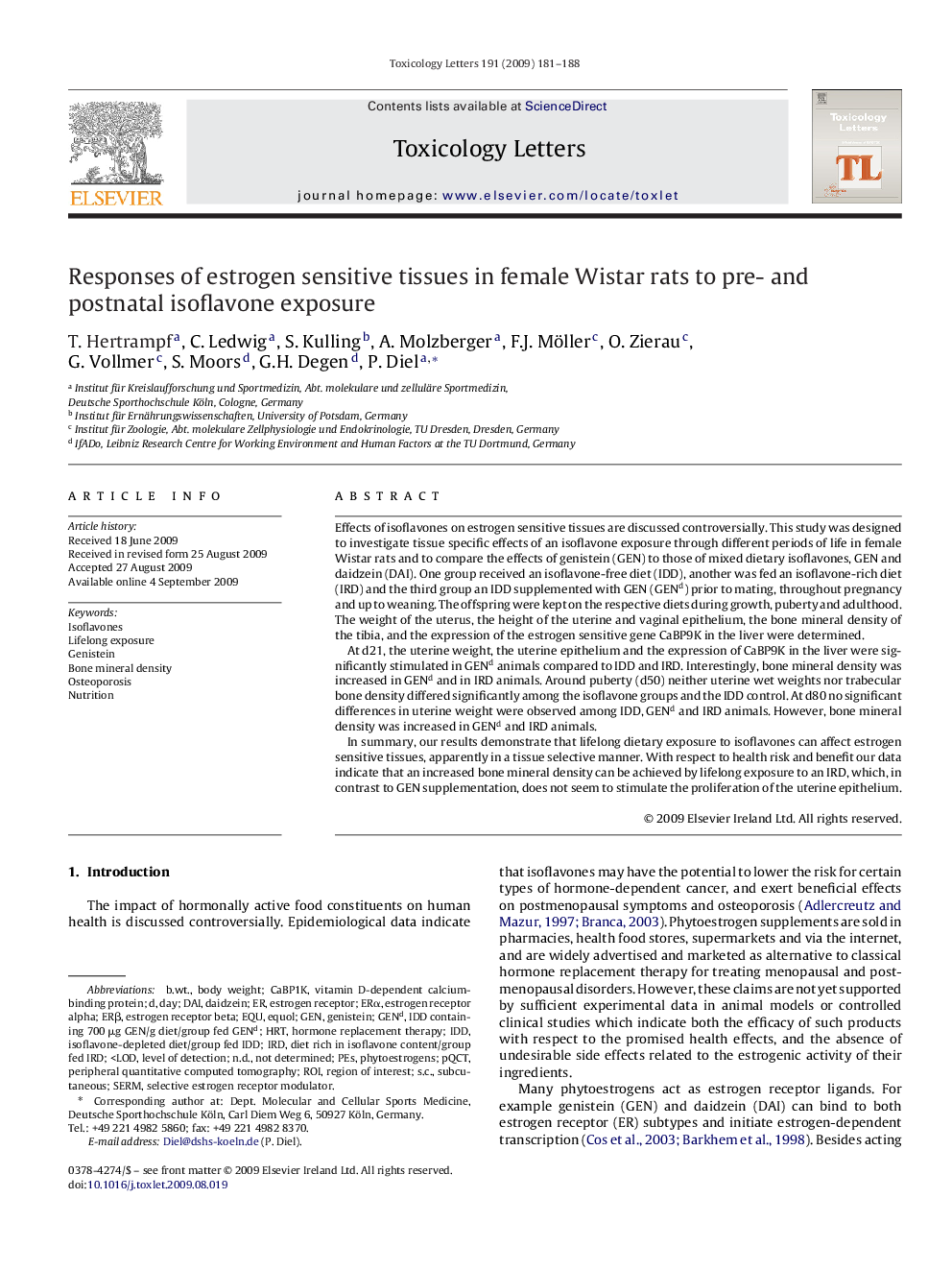| کد مقاله | کد نشریه | سال انتشار | مقاله انگلیسی | نسخه تمام متن |
|---|---|---|---|---|
| 5860901 | 1562642 | 2009 | 8 صفحه PDF | دانلود رایگان |

Effects of isoflavones on estrogen sensitive tissues are discussed controversially. This study was designed to investigate tissue specific effects of an isoflavone exposure through different periods of life in female Wistar rats and to compare the effects of genistein (GEN) to those of mixed dietary isoflavones, GEN and daidzein (DAI). One group received an isoflavone-free diet (IDD), another was fed an isoflavone-rich diet (IRD) and the third group an IDD supplemented with GEN (GENd) prior to mating, throughout pregnancy and up to weaning. The offspring were kept on the respective diets during growth, puberty and adulthood. The weight of the uterus, the height of the uterine and vaginal epithelium, the bone mineral density of the tibia, and the expression of the estrogen sensitive gene CaBP9K in the liver were determined.At d21, the uterine weight, the uterine epithelium and the expression of CaBP9K in the liver were significantly stimulated in GENd animals compared to IDD and IRD. Interestingly, bone mineral density was increased in GENd and in IRD animals. Around puberty (d50) neither uterine wet weights nor trabecular bone density differed significantly among the isoflavone groups and the IDD control. At d80 no significant differences in uterine weight were observed among IDD, GENd and IRD animals. However, bone mineral density was increased in GENd and IRD animals.In summary, our results demonstrate that lifelong dietary exposure to isoflavones can affect estrogen sensitive tissues, apparently in a tissue selective manner. With respect to health risk and benefit our data indicate that an increased bone mineral density can be achieved by lifelong exposure to an IRD, which, in contrast to GEN supplementation, does not seem to stimulate the proliferation of the uterine epithelium.
Journal: Toxicology Letters - Volume 191, Issues 2â3, 15 December 2009, Pages 181-188